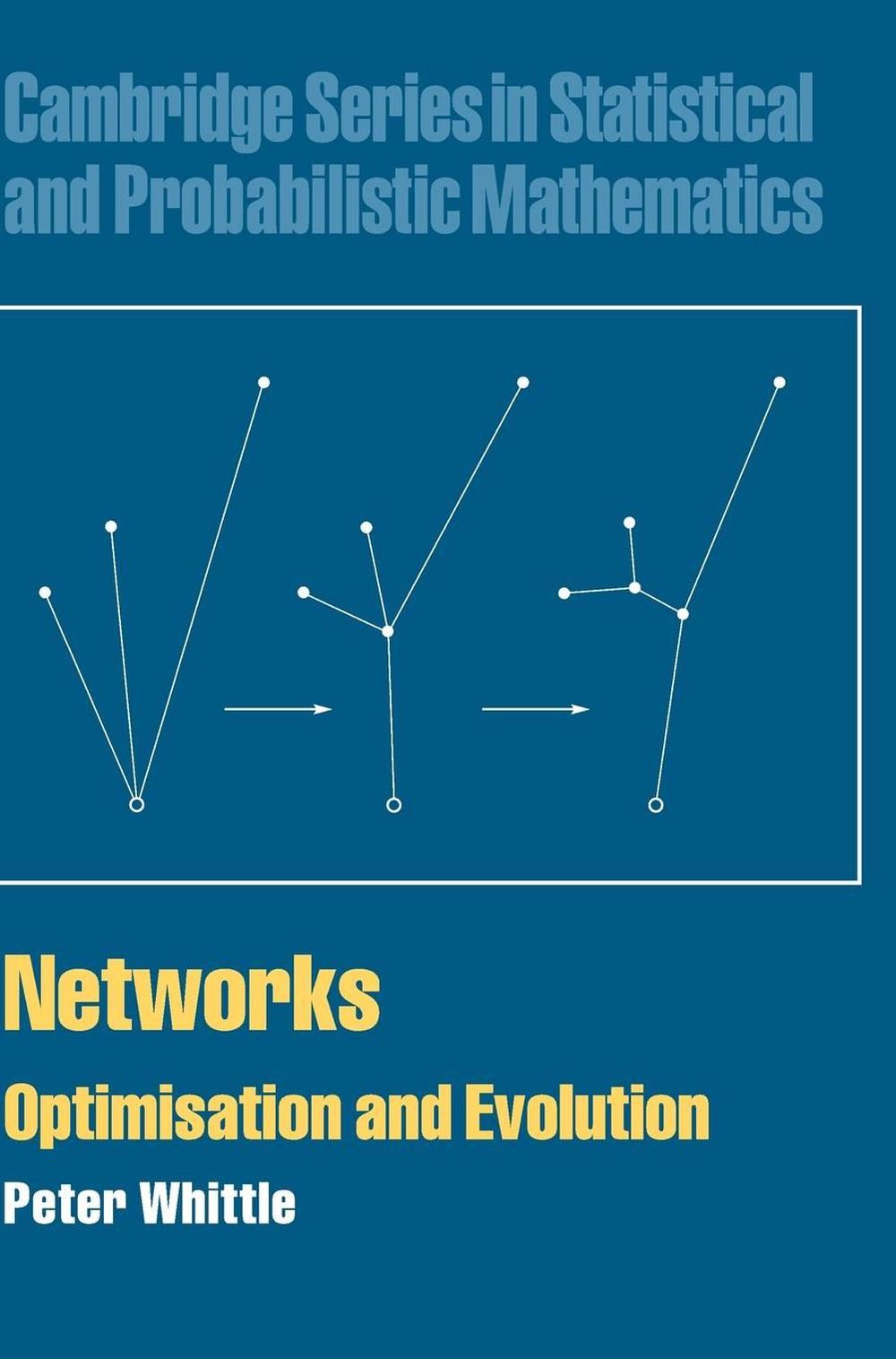
When you click on links to various merchants on this site and make a purchase, this can result in this site earning a commission. Affiliate programs and affiliations include, but are not limited to, the eBay Partner Network.
Networks: Optimisation and Evolution by Peter Whittle (English) Hardcover Book

- Item No : 135662053005
- Condition : Brand New
- Brand : No brand Info
- Seller : the_nile
- Current Bid : US $113.92
-
* Item Description
-
The Nile on eBay

Networks: Optimisation and Evolution
by Peter Whittle
Point-to-point vs. hub-and-spoke. Questions of network design are real and involve many billions of dollars. Yet little is known about optimizing design - nearly all work concerns optimizing flow assuming a given design. This foundational book tackles optimization of network structure itself, deriving comprehensible and realistic design principles. With fixed material cost rates, a natural class of models implies the optimality of direct source-destination connections, but considerations of variable load and environmental intrusion then enforce trunking in the optimal design, producing an arterial or hierarchical net. Its determination requires a continuum formulation, which can however be simplified once a discrete structure begins to emerge. Connections are made with the masterly work of Bends??e and Sigmund on optimal mechanical structures and also with neural, processing and communication networks, including those of the Internet and the Worldwide Web. Technical appendices are provided on random graphs and polymer models and on the Klimov index.
FORMAT
HardcoverLANGUAGE
EnglishCONDITION
Brand New
Publisher Description
Point-to-point vs hub-and-spoke. Questions of network design are real and involve many billions of dollars. Yet little is known about optimising design - nearly all work concerns optimising flow assuming a given design. This foundational book tackles optimisation of network structure itself, deriving comprehensible and realistic design principles. With fixed material cost rates, a natural class of models implies the optimality of direct source-destination connections, but considerations of variable load and environmental intrusion then enforce trunking in the optimal design, producing an arterial or hierarchical net. Its determination requires a continuum formulation, which can however be simplified once a discrete structure begins to emerge. Connections are made with the masterly work of Bendsoe and Sigmund on optimal mechanical structures and also with neural, processing and communication networks, including those of the Internet and the World Wide Web. Technical appendices are provided on random graphs and polymer models and on the Klimov index.
Notes
Point-to-point vs hub-and-spoke. Questions of network design are real and involve many billions of dollars. Yet little is known about optimizing design - nearly all work concerns optimizing flow assuming a given design. In this foundational book, Peter Whittle tackles optimization of network structure itself, deriving comprehensible and realistic design principles. Connections are made with optimal mechanical structures, formation of bone structure, and neural, processing and communication networks, including the Internet and the Web. A masterful unification of theory from disparate fields and lessons from nature.
Author Biography
Peter Whittle is Professor Emeritus at the University of Cambridge. From 1973 to 1986 he was Director of the Statistical Laboratory, Cambridge. He is a Fellow of the Royal Society and this is his 11th book.
Table of Contents
Tour d'horizon; Part I. Distribution Networks: 1. Simple flows; 2. Continuum formulations; 3. Multi-class and destination-specific flows; 4. Design optimality under variable loading; 5. Concave costs and hierarchical structure; 6. Road networks; 7. Structural optimisation: Michell structures; 8. Structures: computational experience of evolutionary algorithms; 9. Structure design for variable loading; Part II. Artificial Neural Networks: 10. Models and learning; 11. Some particular nets; 12. Oscillatory operation; Part III. Processing Networks: 13. Queuing networks; 14. Time-sharing networks; Part IV. Communication Networks: 15. Loss networks: optimality and robustness; 16. Loss networks: stochastics and self-regulation; 17. Operation of the Internet; 18. Evolving networks and the World-wide Web; Appendix 1. Spatial integrals for the telephone problem; Appendix 2. Bandit and tax processes; Appendix 3. Random graphs and polymer models; References; Index.
Review
Review of the hardback: '... a remarkable book ... a pleasure to read ... plenty of interesting results, ideas and inspiration.' Hartmut Noltemeier, Zentralblatt MATH
Review Quote
Review of the hardback: '… a remarkable book … a pleasure to read … plenty of interesting results, ideas and inspiration.' Hartmut Noltemeier, Zentralblatt MATH
Promotional "Headline"
This book is a masterful unification of disparate fields and lessons from nature and derives comprehensible and realistic design principles.
Description for Bookstore
This is a foundational book on optimisation of network structure, not just function, deriving comprehensible and realistic design principles. Connections are made with optimal mechanical structures, formation of bone structure, and neural, processing and communication networks, including the Internet and the Web. A masterful unification of theory from disparate fields and lessons from nature.
Description for Library
This is a foundational book on optimisation of network structure, not just function, deriving comprehensible and realistic design principles. Connections are made with optimal mechanical structures, formation of bone structure, and neural, processing and communication networks, including the Internet and the Web. A masterful unification of theory from disparate fields and lessons from nature.
Details
ISBN052187100XAuthor Peter WhittleShort Title NETWORKSPages 271Publisher Cambridge University PressSeries Cambridge Series in Statistical and Probabilistic MathematicLanguage EnglishISBN-10 052187100XISBN-13 9780521871006Media BookFormat HardcoverDEWEY 519.6Series Number 21Illustrations YesYear 2007Publication Date 2007-04-30Imprint Cambridge University PressSubtitle Optimisation and EvolutionPlace of Publication CambridgeCountry of Publication United KingdomEdition 1stBirth 1927Affiliation Univ. of Cambridge, UK Univ. of Cambridge Univ. of Cambridge Univ. ofDOI 10.1604/9780521871006Audience Professional and ScholarlyUK Release Date 2007-04-12AU Release Date 2007-04-12NZ Release Date 2007-04-12


-
- The Lost Super Foods
- $ 37.00
- The Self-Sufficient Backyard
- $ 37.00
- A Navy Seals BUG IN GUIDE
- $ 39.00
- Childrens Books Phonics Lot 60
- $ 34.99
















